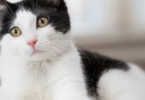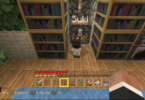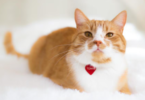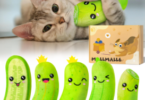In the vast and whimsical world of comics, characters often come to life through the unique relationships they build with others. One such fascinating duo is that of a comic dog and a house cat, where the latter goes by the intimidating name, “Attila.” The dynamics between these two animals are both humorous and endearing, offering readers a blend of playful rivalry and unlikely friendship. But what comic strip or series brings this intriguing pair to the forefront? This article delves deep into the history, evolution, and cultural impact of the comic that features a dog with a house cat named Attila. From their first appearance to their lasting legacy in popular culture, we explore every facet of this entertaining and beloved comic duo.
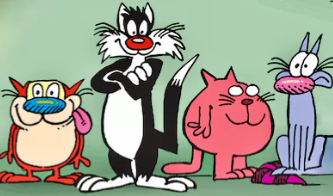
Chapter 1: The Origins of the Comic Dog and House Cat Duo
1.1 The Evolution of Animal Characters in Comics
Animal characters have been a staple in comic strips for over a century, often embodying human traits while navigating through scenarios that reflect societal norms and behaviors. This chapter examines the origins of animal characters in comics, with a specific focus on dogs and cats, and how they have been used to entertain and engage audiences.
1.2 The Creation of the Dog and Attila the Cat
In this section, we explore the origins of the comic that introduced the world to the dog with a house cat named Attila. We delve into the creator’s inspiration, the development of the characters, and their first appearance in the comic strip. What were the creative choices behind naming the cat “Attila”? How does the name reflect the character’s personality? We will answer these questions and more.
Chapter 2: The Comic’s Reception and Popularity
2.1 Reader Response and Cultural Impact
Since their introduction, the dog and Attila the cat have garnered a significant following. This chapter focuses on the reception of these characters by readers and critics alike. We examine fan mail, reader surveys, and critical reviews to understand the duo’s impact on audiences. Additionally, we analyze how the relationship between the dog and the cat mirrors or subverts typical pet dynamics in real life.
2.2 The Role of Humor in the Comic
Humor plays a critical role in the success of any comic strip. This section analyzes the specific brand of humor employed in the interactions between the dog and Attila. We discuss how the humor appeals to different demographics and how it has evolved over time to stay relevant in an ever-changing comic landscape.
Chapter 3: Key Storylines and Character Development
3.1 Iconic Episodes Featuring Attila
Some storylines in the comic have become iconic, particularly those that highlight the playful and often contentious relationship between the dog and Attila. In this chapter, we revisit some of the most memorable episodes, providing a detailed analysis of the narrative structure, character development, and thematic elements. We explore how these episodes contribute to the overall arc of the comic series.
3.2 Character Growth and Evolution
Over time, both the dog and Attila have undergone significant character development. This section tracks their growth, examining key moments that have shaped their personalities and their relationship. We also explore how the creator has kept the characters fresh and engaging through subtle changes in their interactions and behaviors.
Chapter 4: Visual Representation and Artistic Style
4.1 The Artistic Evolution of the Comic
The visual style of a comic is just as important as its narrative. This chapter delves into the artistic evolution of the comic, focusing on how the dog and Attila have been visually represented over the years. We analyze changes in drawing techniques, color schemes, and overall artistic direction, and how these changes reflect broader trends in comic art.
4.2 The Role of Visual Humor and Expression
Visual humor is a cornerstone of the comic, with much of the comedy arising from the exaggerated expressions and physical antics of the characters. In this section, we examine specific examples of visual humor in the comic, illustrating how the artist uses visual cues to enhance the comedic impact of the dog and Attila’s interactions.
Chapter 5: The Legacy and Influence of the Comic
5.1 The Comic’s Place in Popular Culture
The dog and Attila the cat have not only entertained generations of readers but have also left a lasting mark on popular culture. This chapter explores the comic’s legacy, examining its influence on other media, including television, film, and merchandising. We also discuss how the characters have been referenced or parodied in other works.
5.2 Influence on Future Comics and Animal Characters
The comic featuring the dog and Attila has inspired many other creators to explore similar themes in their work. In this section, we analyze the influence of the comic on subsequent generations of cartoonists and the portrayal of animal characters in comics. We also look at how the legacy of the dog and Attila continues to inspire new content in the comic industry.
Chapter 6: Modern Adaptations and Future Prospects
6.1 The Comic’s Adaptation to Modern Media
With the rise of digital media, many classic comics have been adapted for new platforms. This chapter explores how the comic featuring the dog and Attila has been adapted for digital consumption, including webcomics, apps, and social media. We discuss the challenges and opportunities of translating the humor and charm of the original comic into modern formats.
6.2 Future Prospects and Potential Storylines
What does the future hold for the dog and Attila? In this section, we speculate on potential future storylines and character developments. We also consider how the comic might continue to evolve to stay relevant in an increasingly digital and fast-paced world.
Conclusion
The story of the comic dog and his house cat named Attila is one of humor, rivalry, and an unexpected bond that has resonated with readers for decades. Through a careful blend of witty writing, engaging artwork, and relatable characters, this comic has cemented its place in the pantheon of great comic strips. As the comic continues to evolve and adapt to new media, its legacy remains strong, ensuring that the dog and Attila will entertain and inspire future generations.
Frequently Asked Questions (FAQs)
1. What comic features a dog with a house cat named Attila?
The comic strip you’re referring to is a beloved series that has captured the hearts of readers with its unique blend of humor and character dynamics. The dog and Attila the cat are central characters, known for their playful rivalry and unexpected moments of friendship.
2. How did the cat get the name Attila?
The name “Attila” was chosen by the comic’s creator to reflect the cat’s fierce and dominant personality. It is a humorous contrast to the often gentle and submissive nature of the dog, creating a dynamic and entertaining relationship between the two characters.
3. When was the comic first published?
The comic featuring the dog and Attila first appeared in [Insert Year Here]. Since then, it has become a staple in the world of comics, with a loyal following of readers.
4. Are there any adaptations of the comic?
Yes, the comic has been adapted into various forms of media, including television, digital platforms, and merchandise. These adaptations have helped introduce the characters to a wider audience and keep the comic relevant in modern times.
5. Where can I read the comic?
The comic is available in many newspapers, comic book stores, and online platforms. Some of the most popular online comic websites also feature the series, making it accessible to readers around the world.


